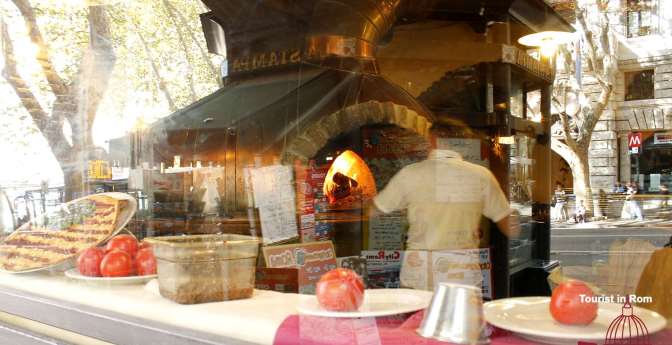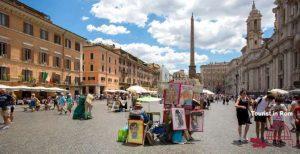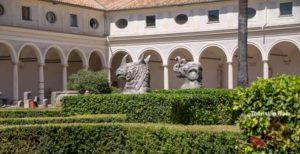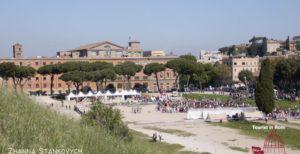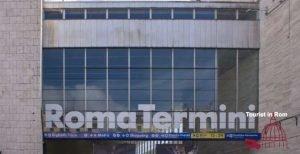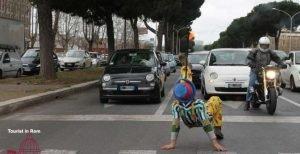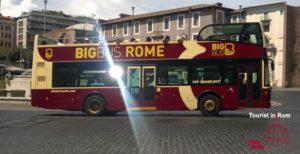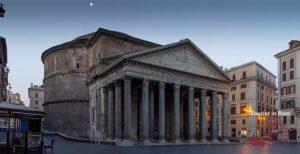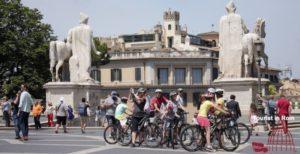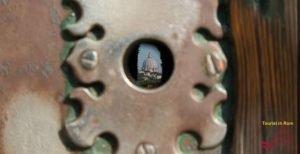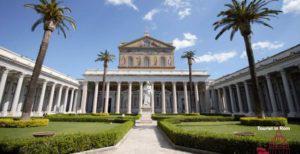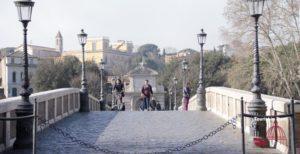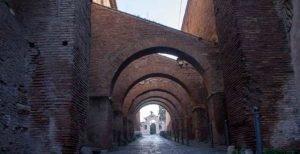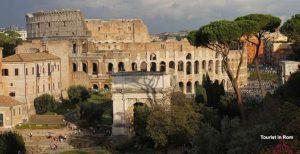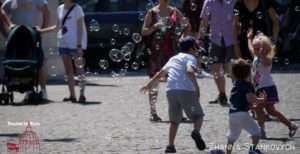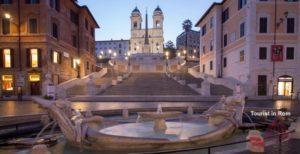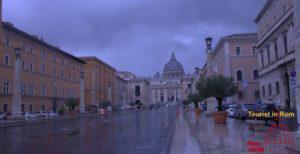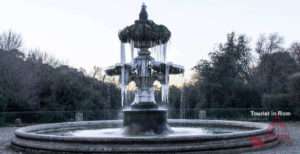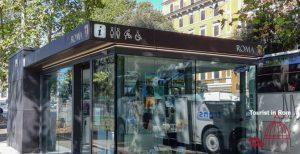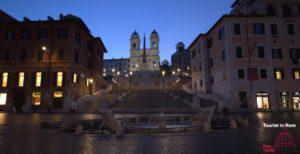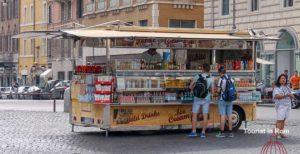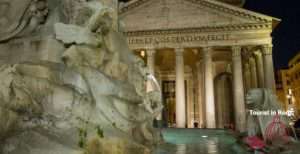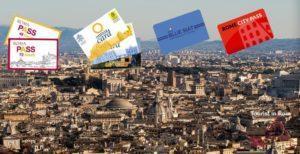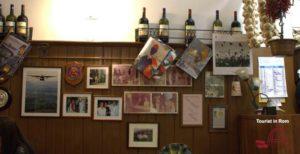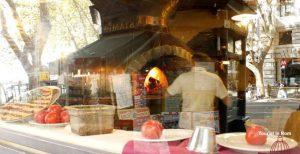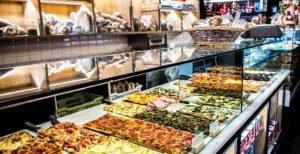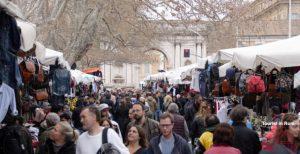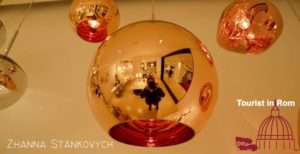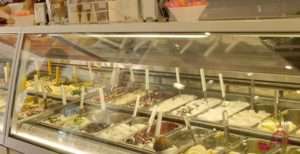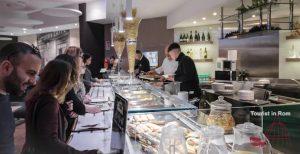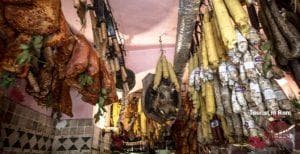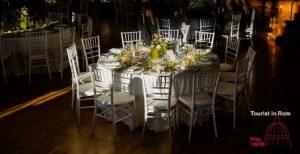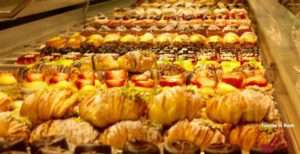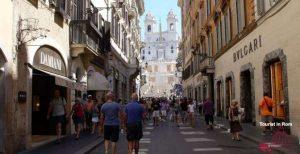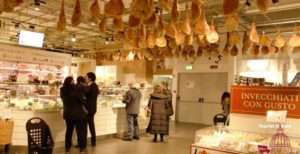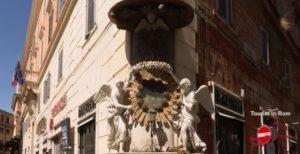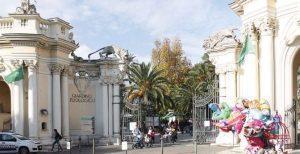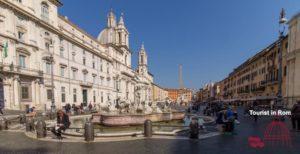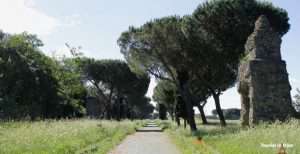Rome is all about good food. There is an abundance of culinary delights that you must try.
Romans are conservative when it comes to food and do not like experiments. Traditional Roman cuisine is very popular. The gastronomic scene in Rome is built on tradition, but also continuously evolving and cross-fertilized by the influences of other countries in the Mediterranean.
Partner links help us to provide our information free of charge. For completed bookings we receive a commission – at no extra cost to you! More
There is food in Rome at any time of the day. If you want to eat quickly, you can go to a bar, a supermarket or a street vendor. For a leisurely lunch or dinner, Rome offers the whole spectrum from a simple trattoria to a top restaurant.
How do the Romans eat?
The Romans usually only take an espresso and a croissant – caffè e cornetto – for breakfast at the bar for around € 1.50, maybe even a cappuccino. At lunchtime, many people go to a fast-food restaurant or to a pizza oven (pizza al taglio) and then there is coffee again – you can recognize tourists by the fact that they still drink cappuccino in the afternoon. In the evening there is an extensive multi-course meal.
If the Romans cook at home, they can also have pasta for lunch and dinner.
Street Food
Street food is a very inexpensive and time-saving alternative to going to a restaurant.
Paninoteche
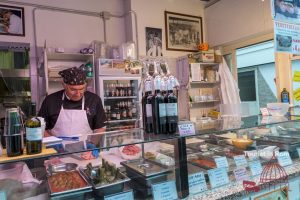
In Rome you can find a wide range of sandwiches – panini – in a paninoteca. The breads are offered in all imaginable variations: different types of meat, meatballs and sauces, ingredients of Roman cuisine and salads. Mordi e Vai is very well known in the Testaccio market.
Pizza al taglio
The pizza from the tray is one of the most popular choices for a quick meal in between bigger meals or as a substitute for a dinner. It is important that the pizza is prepared in the laboratory of the shop and is not heated up from the refrigerator. Many supermarkets now also own ovens and offer fresh pizza. Read pizza street food in Rome
Deep fried food
Many shops also offer deep fried foods. There are usually Supplì – fried rice balls in different varieties. Normal supplì contain tomato rice with mozzarella, besides you find variants such as Cacio e Pepe, Carbonara and Amatriciana. Arancini – the Sicilian variation – are conical fried rice balls with filling.
Often you will also find Olive Ascolane, deep-fried olives with meat filling, Fiori di Zucca, fried zucchini flowers, fried vegetables, potato croquettes and fried mozzarella.
Hamburger
A real cult has developed around hamburgers in Rome in recent years. Many hamburger stores offer creations that resemble the Tower of Babel. Donts in Trastevere at via di San Cosimato 4 is highly recommended, and right next door is Otaleg, one of the best ice cream parlors in Rome.
Fish street food
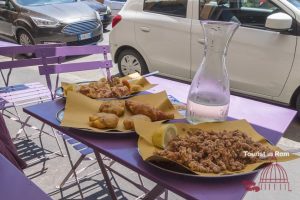
Some fish stores – pescherie – offer takeaway preparations such as raw or fried fish. In the center, for example, would be Attanasio in Piazza del Paradiso, open Tuesday – Saturday until 3 pm. Also very neat is Pescheria Agraja by the Subaugusta metro station at Via Quintilio Varo 92, Tuesday – Saturday until 10:30pm.
In Ostia Lido there is delicious fried fish and a good house wine on tap at Pesce Fritto e Baccalà in Via Rutilio Namaziano 4/a, just before the Pontile.
Doner kebab
You can also find kebab shops at many of the city’s nodal points. The kebab rolled into the flatbread is inexpensive and replaces a complete meal.
Roman cuisine
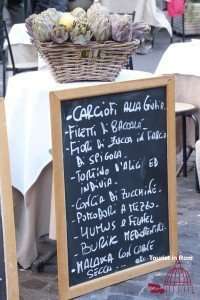
The Roman cuisine is a simple and rather heavy kitchen. You will be able to find “Cucina alla Romana” in many simple restaurants marked “Trattoria” or “Osteria”. Depending on the season, you can choose from a variety of artichokes such as “Carciofi alla Romana” or deep fried artichokes “Carciofi alla Giudia”, “Fiori di zucca” deep fried courgette flowers, deep fried rice balls “Supplì” or a type of endive salad with anchovies “Puntarelle”.
Usual pasta dishes are Cacio e Pepe, Amatriciana, Gricia, Carbonara and sometimes the Pajata, with the very delicate tripe of the milk calf.
As main courses, you will find innards of lamb and poultry “Coratella”, tripe “Trippa”, sweetbread “Animelle”, oxtail in tomato sauce “Coda alla Vaccinara” and of course various preparations of codfish “Baccalà”.
Many places with Roman cuisine can be found in the Ghetto, in Trastevere and also in the Borgo between the Vatican and Castel Sant’Angelo.
Deep fried fish
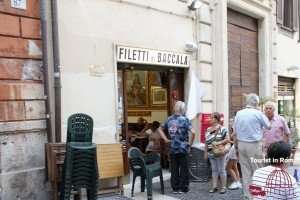
Some restuarants also offer deep-fried fish. It is important that the fish is freshly fried and doesn’t sit-in the oil for too long. In particular the calamari, which can become rubbery otherwise.
The classic in Rome is the deep fried codfish Baccalà. It is an integral part of Roman cuisine and has kept the Romans from starvation. One of the classics is the very rustic restaurant Dar Filettaro between Campo de’ Fiori and the Ghetto. At Filettaro you get the cod fillets fried in huge pans. As a starter they offer anchovies with butter and other dishes depending on the season. For drinks they can offer a good beer or house wine on tap.
Fried baccalà can be found in almost all restaurants serving Roman cuisine, while fish restaurants tend to fry crustaceans and small fish.
Sicilian cuisine
The Sicilian cuisine, which is characterized by diverse cultural and religious influences, from the Greeks to the Saracens and the Normans to the French and Piedmontese, is also really popular. In addition to a wide range of appetizers and main dishes, you will find a wide selection of desserts with a special ricotta, marzipan and candied fruits such as Cannoli or Cassata.
Sicilian restaurants are not very widespread in Rome, Sicilian sweets are available in many pastry shops instead.
Pizze, Focacce and Pinsa
Pizzas, focacce and pinsa consist of a yeast dough baked at high heat with or without tomato sauce and mozzarella and various other toppings, a kind of freshly baked topped bread, so to speak. The Naples pizza is taller, made with a thicker dough, while the Roman version is very thin and crispy.
Many pizzerias emphasize a long maturing time for the dough. For the pizza it is often 24 hours, for the pinsa even more. The Pinsa is prepared with particularly traditional flours and a particularly long matured dough. While the traditional pizza comes out of the oven round, the pinsa is prepared rectangular.
Fish
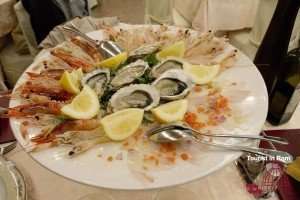
In Rome, sea food is commonly popular. Freshwater fish, especially trout, can be found in the hinterland, for example in Tivoli.
There are a lot of excellent fish restaurants and fish shops, where you can eat. In addition, there are restaurants specialized in crustaceans “Crostacerie”.
The oyster situation is somewhat difficult. The supply of local oysters is scarce and the majority of the oysters have already traveled a long way.
A challenge is the preparation of raw mussels, crustaceans and fish, which must be particularly fresh.
Grilled meat
In many places you can choose your meat directly at the counter. The Chianina meat, an original cattle breed from Tuscany, is very popular. Danish beef is also popular because it’s more marmorated.
Besides beef, lamb is popular, Arrosticini are small skewers, or Scottadito, grilled lamb chops, mostly little meat and lots of bones.
Of course you will also find sausages, ribs and other varieties of meat.
Wine shops
Just as there are dishes with beer in the brewery, you can find tasty small specialties with wine in many enotheques.
We would particularly like to mention the Antica Enoteca in via della Croce, a cross street of Via del Corso, and Cul de Sac in Piazza di Pasquino, behind Piazza Navona.
You can find the brewery atmosphere in the Antica Birreria Peroni in Via S. Marcello 19, between Trevi fountain and Piazza Venezia.
All you can eat
Inexpensive Chinese restaurants have been established in Rome for many years. Many of these restaurants have expanded their offerings to include sushi or Thai cuisine and offer formulas for lunch and dinner at very reasonable prices.
At lunchtime, some Italian restaurants also offer a rich buffet of antipasti, starters and desserts. The Sunday buffet is often advertised as brunch, although the typical ingredients of a breakfast are missing.
Behind Piazza Navona in Via del Teatro Pace 44 there is Senza Fondo, the first all you can eat with Roman cuisine. You should order several plates at once, otherwise you may have to wait a long time. It is often criticized that the dishes do not quite correspond to the originals. But of course the small portions cannot always be freshly prepared.
Tip
Tipping is not an obligation in Rome, but tipping is of course welcome. If you are satisfied with the service you can tip 1 euro per person, or 2 euros in very good restaurants with very attentive service. Tips should always be given in cash, it is not possible to round up the credit card slip.
Delivery services
Four delivery services in particular compete in Rome. The oldest is Justeat.it, the others are Deliveroo, Glovo and Ubereats. After you’ve entered your address, the systems will suggest restaurants in the area to order from. Make sure that the restaurant is not too far away so that the food is not driven halfway through the city.
